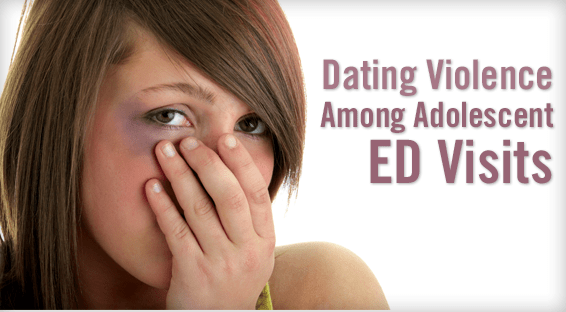Adolescent and young adult dating violence, which encompasses both victimization and aggression, is a significant public health concern. Some studies estimate that as many as 10% of high school students have experienced dating victimization and nearly 20% have reported physical violence toward a dating partner. “While intimate partner violence (IPV) has been recognized as a significant problem among adults, little is known about this violence and aggression in adolescent and young adult populations,” says Vijay Singh, MD, MPH, MS.
The Joint Commission mandates that clinicians screen patients for IPV in all healthcare settings, including the ED. The United States Preventive Service Task Force also recently recommended that asymptomatic women aged 14 to 46 be screened for IPV and provided intervention services. “Despite these initiatives, only 30% of adolescents report ever being asked by a healthcare provider about dating violence,” says Dr. Singh. “Simply treating injuries and not assessing for dating violence means we can miss opportunities to prevent these problems in the future and break the cycle of violence.”
It is important to examine dating victimization and aggression among both sexes because dating violence is common in both men and women, according to Dr. Singh. “Assessment of both dating victimization and aggression is lacking in the literature,” he says. “Dating violence is different from adult IPV in that relationship roles are not yet set. Many adolescent couples aren’t living together and there is a tendency for them to change partners more often than adults.” Patterns that begin in adolescence can carry over to adulthood, including IPV.
Assessing Trends of Adolescent Violence
In the Annals of Emergency Medicine, Dr. Singh and colleagues had a study published in which they screened 4,089 males and females aged 14 to 20 who sought ED care. Dating victimization was defined as violent acts received by a young adult, whereas dating aggression referred to violent acts perpetrated by youths. These acts included throwing objects at someone; kicking, hitting, or punching; slapping or pulling hair; and pushing and shoving.
According to the results, more than 15% of the sample reported past-year dating violence (Table 1). “Almost one in five females and one in eight males reported past-year dating violence,” Dr. Singh says. This prevalence was higher than what has been seen previously in school-based samples. Of female patients involved in the study, nearly 11% reported any dating victimization and about 15% reported any dating aggression. For males, about 12% reported any dating victimization and nearly 5% reported any dating aggression. Among those with dating violence, nearly one in three patients reported both dating victimization and dating aggression.
Several themes also emerged with regard to demographics, associated behaviors, and ED health service use for any dating violence, any dating victimization, and any dating aggression (Table 2). “Patients who misused alcohol, used illicit drugs, and/or had depression were more likely to commit dating violence, regardless of the patient’s gender,” says Dr. Singh. African-American race was another factor associated with dating violence for both males and females. In addition, females who reported dating violence were more likely to be on public assistance, have lower academic grades, and to have visited an ED in the prior year for an intentional injury.
Important Implications for ED Health Service
Understanding ED health service use patterns may enhance the identification of dating violence. “Our data highlight the fact that many adolescents have already experienced violence in their dating lives,” says Dr. Singh. “These patterns may begin in adolescence, and there is a real chance that they can carry over into adulthood. Screening and interventions for youths with a history of dating violence may help reduce the risk of IPV later in life.”
The fact that dating violence among adolescents was strongly associated with alcohol misuse, illicit drug use, and depression is important, says Dr. Singh. “If adolescents present to the ED with any of these factors, clinicians should consider asking about dating violence,” he says. “We can take a targeted approach if we understand the factors and health problems associated with dating violence.”
In the future, Dr. Singh recommends that dating violence interventions assess mental health and substance use problems, and intervene on these co- occurring problems. “We need studies to explore new and efficient ways to screen young adults for dating violence in the ED so that we can decrease the burden of this growing health problem,” he says. “When developing interventions, we should consider both male and female youths as potential victims and/ or aggressors.”




 TimH
TimH